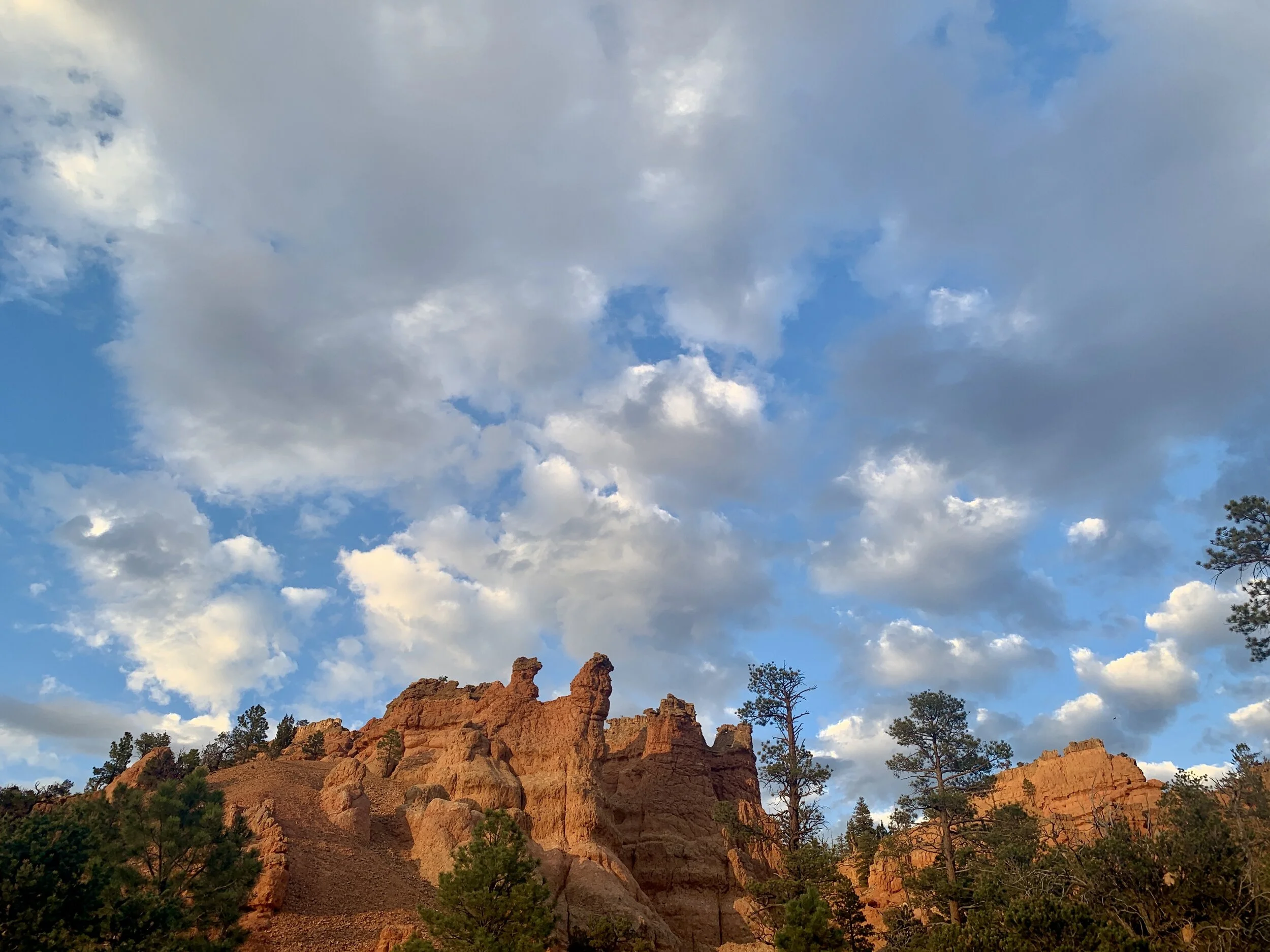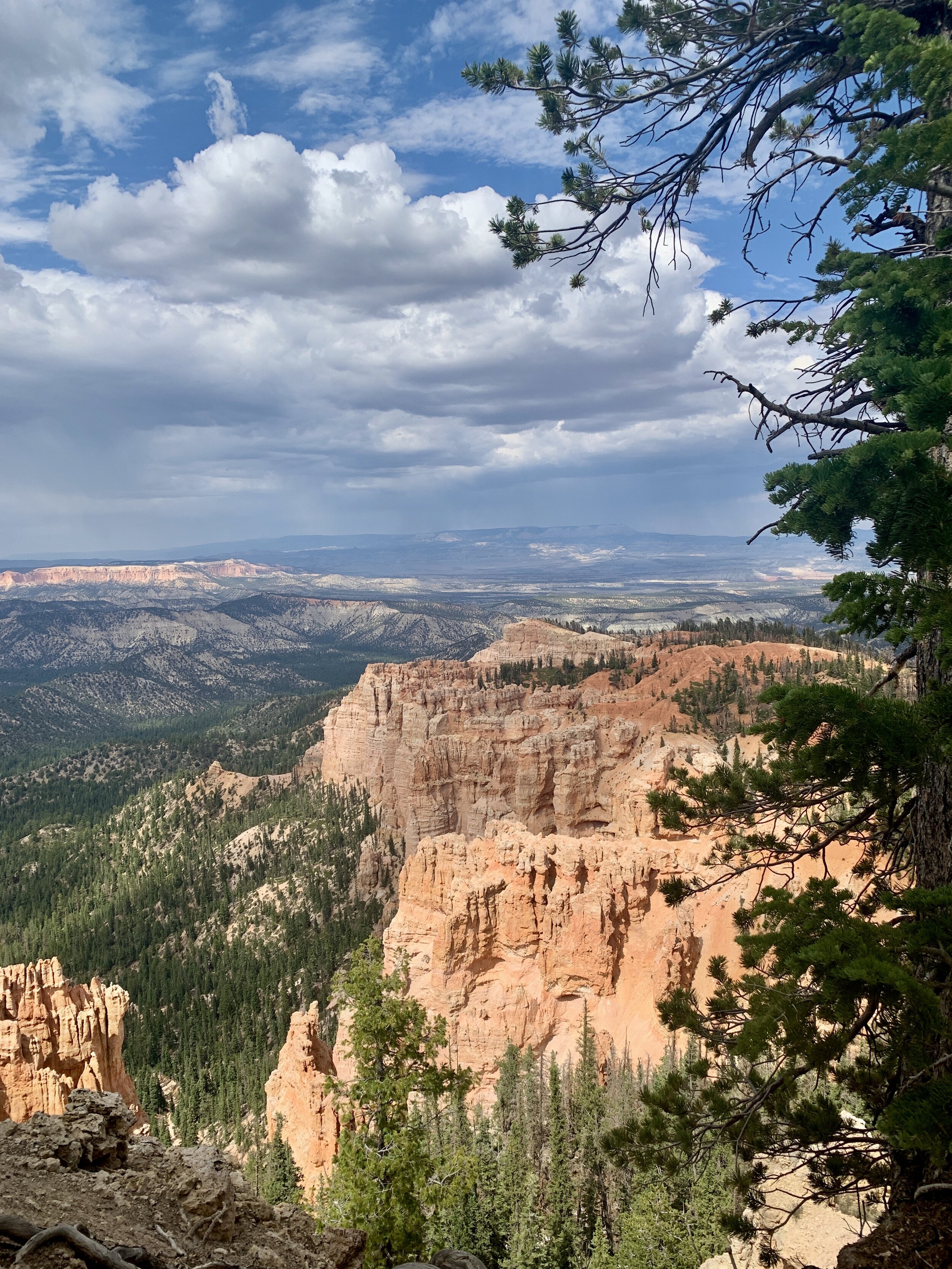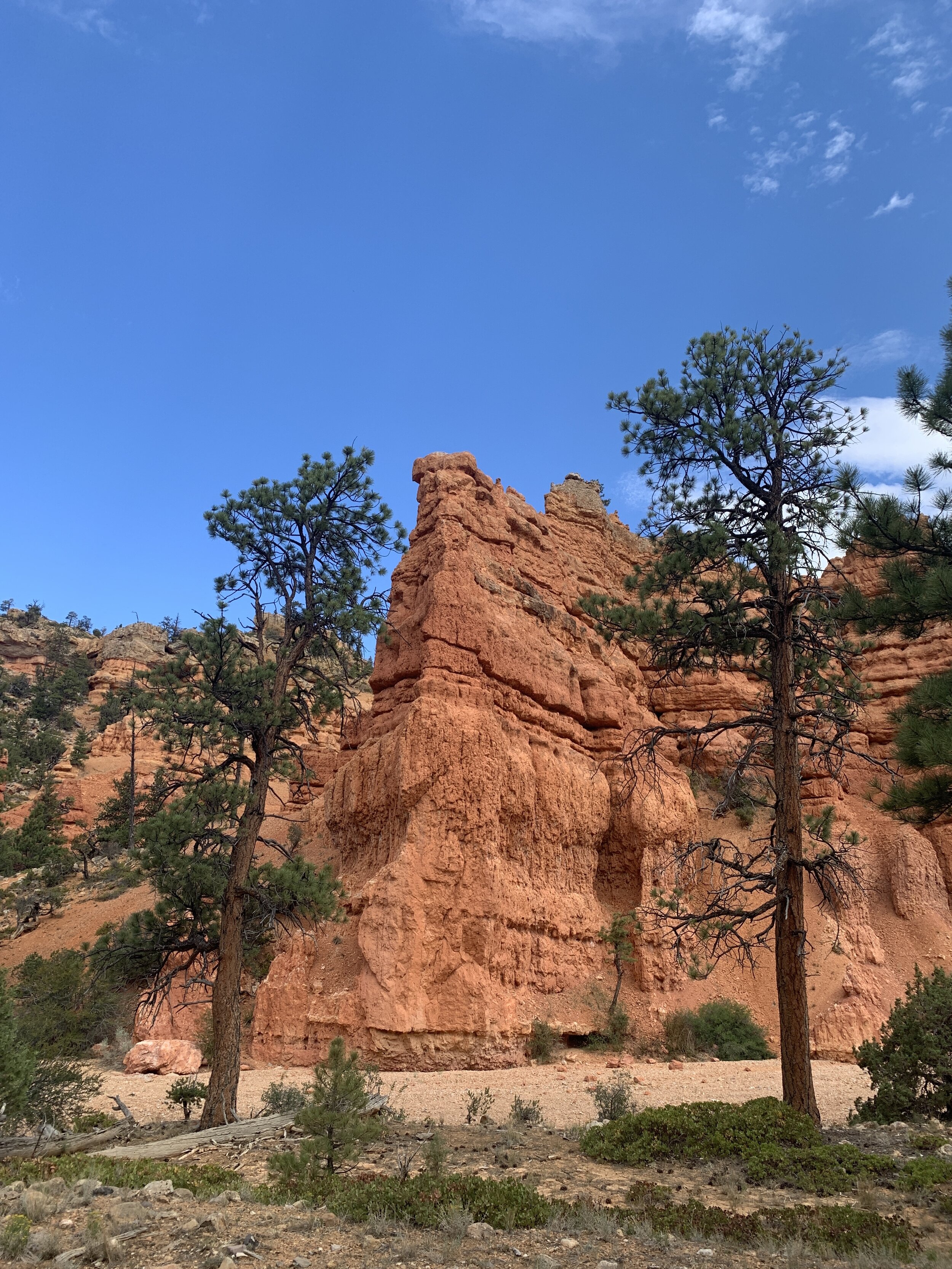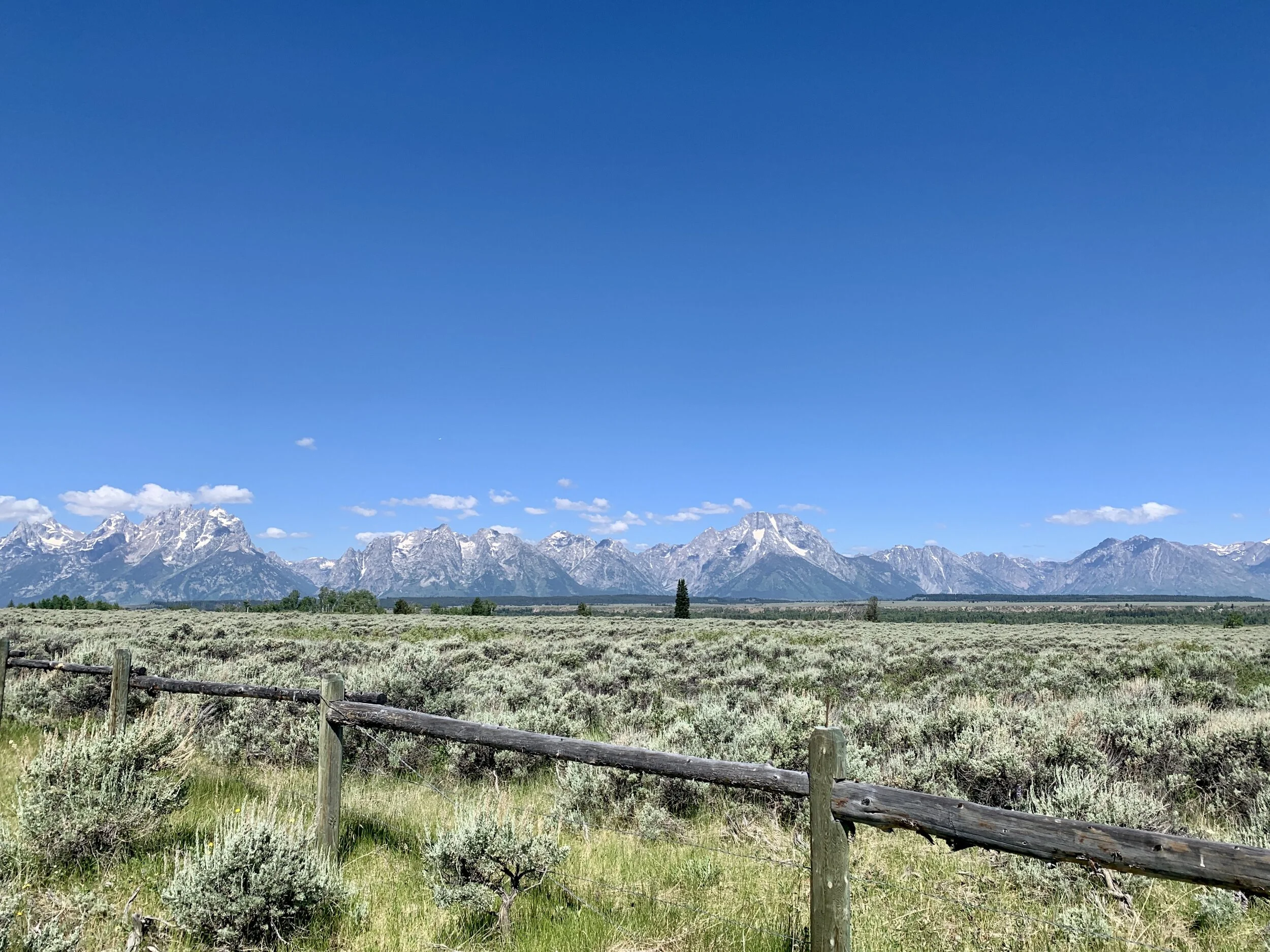Bryce Canyon National Park
Bryce Canyon National Park was crowded. As I drove into the park I noticed plastic yellow A-frame signs at the head of each road that branched off from the main thoroughfare that runs north to south through the park; the signs said ‘Lot Full’. Bright orange traffic cones lined the road at various points to prevent roadside parking.
At this point in the trip I’ve been alone for a majority of my time. Even though I navigated crowded parking lots (often driving through multiple times before I found a parking space), and took pictures between other people also taking pictures—my visit felt solitary. A crowd accentuates loneliness.
Traveling solo allows me to observe. I took a short walk out to a cliff. Signs along the way explained that bristlecone pine trees were just about the only plant life that could survive longterm on the exposed cliffs above the amphitheater of hoodoos (tall, rock towers that were standing alone, separated from the curved rock wall). Additional signs posted information about the fragility of the surrounding ecosystem and warned walkers to stay on the trail.
When I came to the largest bristlecone pine, it seemed to be dead. Bristlecone Pines have the longest lifespan of any conifer, and the oldest one is estimated to be 5,060 years old. I can’t be sure, but the cause of death was perched on every branch: people. A multi-generational family was climbing the tree and each member claimed a branch for a group photo. I would later learn that climbing the fragile, ancient tree removes an important protective later on the bark and compacts the surrounding soil which prevents (precious) water from reaching the roots of the pine.
I remembered a suggestion from a ranger that confronting visitors, as a visitor yourself, often does not go well or accomplish the desired effect. Rangers have a hard enough time convincing visitors into respecting public lands. I hiked on.
Little did I know that I would get a chance to discuss such a moment with Bryce Canyon staff. On July 5th I left my campsite in Dixie National Forest, 30 minutes outside of the park, to go into the town of Panguitch for groceries. When I pulled into the parking lot I noticed another self-converted van, a Ford that I recognized immediately. The van belongs to an acquaintance from Winston-Salem, NC—we have mutual friends, and I’ve followed his van adventures on social media for a few years.
I couldn’t recall his name but I knew I would recognize his face. I entered the store prepared to stalk every aisle. I tried to figure out what I could say that would trigger an introduction—when I found him I mentioned a few of our mutual friends and he quickly remembered me. It turned out that Tim works at Bryce Canyon as an interpretive ranger.
We were both surprised at the chance meeting. It turned into a serendipitous conversation. Before he left the store, Tim invited me to a cookout with fellow rangers and staff in the park later that evening.
I was elated by the prospect of a social gathering. Before I left the store I bought a six pack of beer, and chips to share. I was excited for a social event but I also knew that I could ask Tim and his coworkers about their perspectives on current national park issues: climate change and unprecedented numbers of visitors.
me and Tim in Bryce Canyon National Park housing
There are a variety of jobs within a National Park. The cookout gathering proved to represent most of them: interpretive rangers, law enforcement officers, concessions services managers, and a set of (wild)fire fighters that showed up fresh off a job, sooty and tired after dark. It was a valuable moment to hear diverse perspectives on the issues of climate change and park visitation.
To my delight, the conversation began with the topic of language; a law enforcement officer in the park studied literature for his PhD. He inquired if my focus was place-based writing. Place-based writing is studying the relationship between place and forms of writing that emerge from authors of particular locales. This is a fascinating topic but not the focus of my musings about National Parks. I explained that I am more interested in the relationship between visitor’s and the parks: the psychology behind behaviors within the park and how visitors value public land, and how those value systems influence use (and abuse) of those lands. The overwhelming response from the Bryce Canyon employees was that the title of public lands—namely the banner of “National Park”—is what draws visitors, almost more than the geography itself.
Here’s what a few people had to say:
National Parks are set aside by acts of Congress and managed by the National Park Service (NPS). National Monuments are set aside by a President and managed by the Bureau of Land Management (BLM). It seems that the differences do not stop there. People are more interested in a national park than they are a national monument. In 2017 Grand-Staircase Escalante received just under 1 million visitors. During that same year Bryce Canyon received 2.6 million.
The National Park system has a deep history of advertising to the general public. When Yosemite, the first national park, was established in 1890 the automobile was a new aspect of American life and travel. Auto caravans were organized to tour the country and advertise their ultimate destination: a national park. The infrastructure of America’s public lands were designed around auto travel; the purpose of park design is to facilitate the car.
In the early years of the national park as a concept, encouraging visitors was integral to receiving congressional support. Today, cars bring visitors but they also bring a hefty amount of work for park staff, and increase the impact of visitors on the land.
An apt example of how visitors can impact the land can be found right around the corner from the Bryce Canyon entrance. Mossy Cave is located within park boundaries but outside of the park gates, adjacent to the town of Tropic, Utah. The ‘cave’ is a manmade water feature built by Mormon pioneers in 1890. The canal was built to bring water from the East Sevier River to the canyon. Despite the history, visitors treat Mossy Cave like a natural water fall.
This has not always been the case. Moss Cave was a local “secret” until social media posts (which allow for geo-tagging) raised the profile of the area. The park posted a news release July 2020:
”Mossy Cave has become an increasingly popular area in Bryce Canyon due to several factors including overall increased visitation at the park and a surge in social media postings about the trail. As a result, visitation has significantly increased over the past two years. Since last June, visitation increased by 20% with 6,000 more visitors visiting this small area in one month than in 2019. The original infrastructure at Mossy Cave was not designed to accommodate the amount of use now happening. This increased use has led to safety concerns as vehicles park along SR 12 for some distance in both directions after the original parking lot is full and pedestrians must walk along the highway to reach the trailhead. The increased number of visitors on the trail itself has led to vegetation trampling, litter and other impacts caused by crowded conditions. “
In October of 2020 the park began improvements to the area. A pedestrian access trail and overflow parking lot were built. Despite these improvements, park staff (entertainingly) shared stories of their attempts to divert visitors from high-traffic park locations. (listen below)
Within the national parks, the whims and desires of visitors seem to dictate conservation funds to specific areas. In this instance, the park was able to quickly respond to the impact created by visitors to Mossy Cave. I imagine that this is not always the case. Each year thousands of Bryce Canyon’s visitors flock to an irrigation ditch that is less than 200 years old, while (perhaps) trails through ancient, primal rock formations are left without the social media boost that can bring quick attention to and area: both serving as a catalyst for the problem (over-use) and the solution (funds to support improvements).
Meanwhile, Bears Ears National Monument—also in Utah— was reduced by 85% (due to pressure from uranium mining lobbyists) during the last presidential administration. A National Park seems “more” protected because it is created by Congress and visitation numbers keep the parks in the public eye. Visitors are a source of wear-and-tear on a park, but they also provide some of the funds used to continue protecting the parks.
I can’t help but wonder, though, is the impact from unprecedented visitation numbers undermining conservation efforts? Is the NPS guiding conservation goals or are the visitors? The recent improvements around Mossy Cave seem to indicate that the power lies with the people. But do the people know what the parks need?






